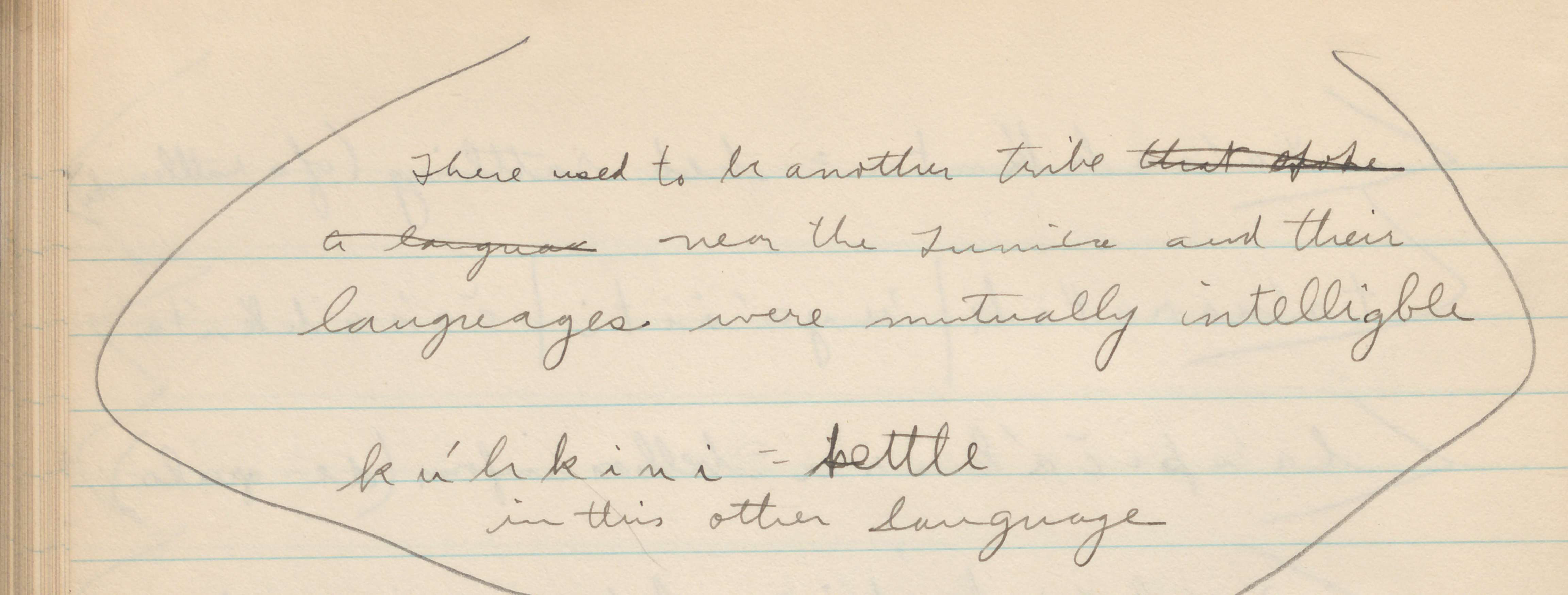Language isolate
by Patricia Anderson
Tunica is a language isolate, meaning it is unrelated to any other language today. But, as is the case with many language isolates, it is likely that related languages once existed. Unfortunately, no related languages were recorded or written down before their speakers were coerced to stop speaking them. Youchigant mentions a mutually intelligible language in Notebook 9, stating that “there used to be another tribe near the Tunica and their languages were mutually intelligible” (180)

Several linguistic relations for Tunica have been proposed over the years. John R. Swanton (1919) proposed a relationship between Tunica, Chitimacha, and Ishak (Atakapa). Edward Sapir (1929) included Tunica in the Hokan-Siouan super-stock. Mary Haas (1951, 1952, 158) proposed a Gulf language family that included Tunica, Natchez, Muskogean, and tentatively included Ishak (Atakapa) and Chitimacha. Pamela Munro (1994) expanded on Haas’s Guld classification to encompass Yuki. For a comprehensive analysis of proposed linguistic relations of Tunica, see Campbell (1997, particularly pages 305-309).
All of the aforementioned theories have since been evaluated as unlikely, based on the existing linguistic evidence.
It is conceivable that languages that were not documented held the key to Tunica linguistic relationships. Non-linguistic documentation indicates the possibility. For example, Yazoo was the language spoken by the Yazoo people. The Yazoo were allies of the Tunica in the early 18th century, and they lived very near the Tunica people at the mouth of the Yazoo river. Jesuit missionary Father Antione Davion lived among the Tunica and Yazoo from 1700-1708, and he wrote letters back to the seminary in Quebec indicating he could be understood in both languages. It is possible that Yazoo language was the mutually intelligible language Youchigant was referring to, however Davion did not include any language samples in his letters, so do not know if he could speak both languages or if he spoke one language that was understood by both groups. Or perhaps Youchigant is referring to Koroa, another small nation in the area allied with the Yazoo. However, these are just speculations. Given that no linguistic documentation survives of either Yazoo or Koroa, we will not be able to prove they have any linguistic relationship to Tunica today. Hence, Tunica remains classified as a language isolate.
References:
Campbell, Lyle. 1997. American Indian Languages: the historical linguistics of Native America. Oxford University Press, New York.
Munro, Pamela. 1994. Gulf and Yuki-Gulf. Anthropological Linguistics 36(2):125-222.
Swanton, John R. 1919. A Structural and Lexical Comparison of the Tunica, Chitimacha, and Atakapa Languages. Bulletin 68. Bureau of American Ethnology. Washington, D.C.
